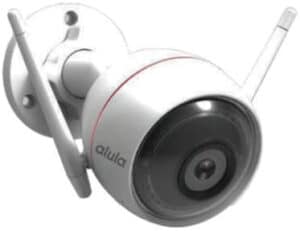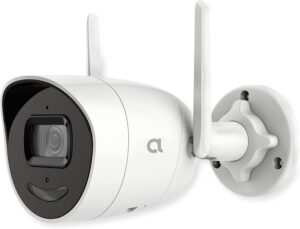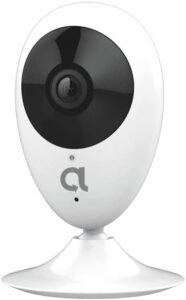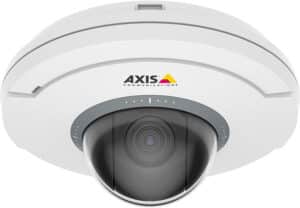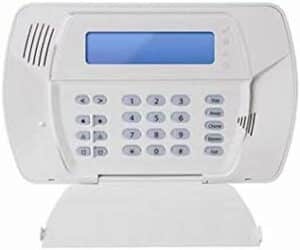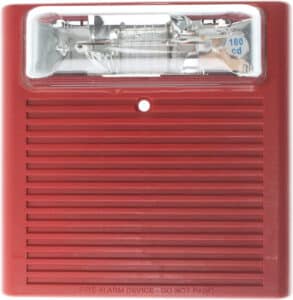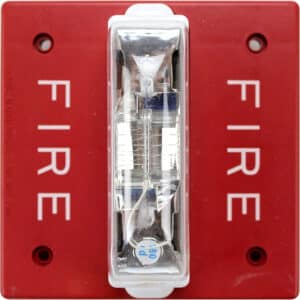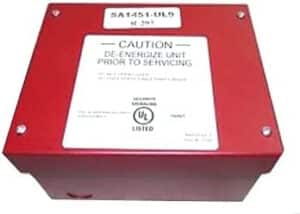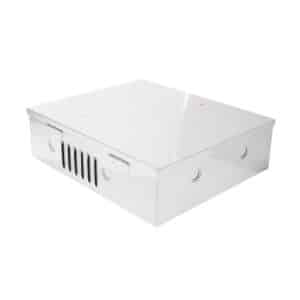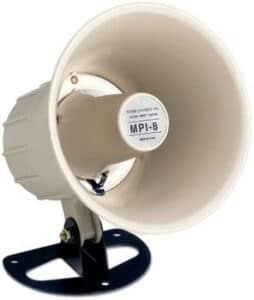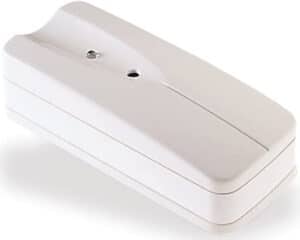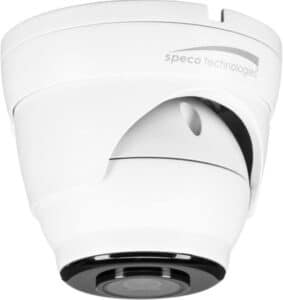How to Choose the Right Access Control System for Your Business
As a business owner, security is a top priority, and access control systems are an essential part of any comprehensive security plan. When choosing the right access control system for your business, there are a range of factors to consider, from the size and layout of your premises to the type of industry you’re in. With so many options on the market, it can be overwhelming to know where to start.
In this comprehensive guide, we’ll walk you through everything you need to know to make an informed decision about which access control system is right for your business, from key features and technology to budget and installation. By the end of this article, you’ll be equipped with the knowledge and tools to ensure that your business remains secure and protected around the clock.
Table of Contents
Understanding the Different Types of Access Control Systems Available for Your Business
As a business owner, ensuring the security of your premises is a top priority. To achieve this, you need to have a reliable access control system in place. With various access control options available, it is essential to understand the differences between them to make an informed decision.
The most common types of access control systems include key-based, biometric, smart card, and cloud-based systems. Key-based systems require a physical key to access a building, while biometric systems use unique human characteristics (e.g., fingerprint or facial recognition) for authentication. Smart card systems use a card with embedded data to grant access, and cloud-based systems store access data remotely, allowing for easier management and updates.
Each of these access control systems has its advantages and disadvantages, which we will explore in detail throughout this article. By understanding the various types of systems available, you will be better equipped to choose the right solution for your business.
Factors to Consider When Choosing an Access Control System for Your Business
Before deciding on the appropriate access control system for your business, there are several factors to consider. These include:
- Size and complexity of your business: Larger businesses with multiple locations may require a more comprehensive system that can be managed centrally. Smaller businesses with fewer employees may benefit from a simpler system with less complexity.
- Security requirements: Evaluate your business’s security needs, considering factors such as the level of protection required, the number of access points, and any specific areas that require heightened security.
- Budget: Cost is always an essential consideration when making any business decision, including access control. Be sure to factor in upfront costs (e.g., hardware, installation) and ongoing costs (e.g., maintenance, software updates).
- Integration: Choose a system that can integrate with your existing security infrastructure, such as surveillance cameras, alarms, and other building management systems.
- Ease of use: An access control system should be user-friendly for both administrators and employees. This includes the ease of managing access permissions, adding or removing users, and monitoring usage.
With a thorough analysis of these crucial factors, you can confidently select the perfect access control system to ensure the utmost protection of your business assets.
Pros and Cons of Choosing a Key-Based Access Control System for Your Business
Key-based access control systems are among the most traditional and straightforward methods for securing a business. They involve the use of physical keys to unlock doors and gain entry into a building. Let’s examine the pros and cons of using a key-based access control system for your business.
Pros:
- Low cost: Key-based systems are generally less expensive than other types of access control systems, making them an attractive option for small businesses with limited budgets.
- Simplicity: Key-based systems are easy to understand and use, requiring minimal training for employees and administrators.
- No reliance on technology: With a key-based system, there are no concerns about software updates, network outages, or other technology-related issues that could compromise security.
Cons:
- Limited access control: Key-based systems do not offer the same level of control as more advanced systems, making it challenging to manage access permissions for individual employees or track usage.
- Risk of lost or stolen keys: Physical keys can easily be lost, stolen, or duplicated, creating security risks.
- Inconvenience: Employees must carry their keys with them at all times, which can be inconvenient and lead to lost or misplaced keys.
Given these pros and cons, key-based access control systems may be suitable for small businesses with minimal security needs. However, larger businesses or those with more complex security requirements may benefit from more advanced access control systems.
Biometric vs. Smart Card Access Control Systems: Which One Fits Your Business?
Biometric and smart card access control systems are two popular alternatives to key-based systems. Both offer advanced security features, but each has its advantages and disadvantages. Let’s explore the differences between biometric and smart card access control systems to determine which one best fits your business needs.
Biometric Access Control Systems:
Biometric systems use unique human characteristics (e.g., fingerprint, facial recognition, iris scanning) to authenticate users. This provides a high level of security, as it is difficult to duplicate or forge biometric data.
Pros:
- High security: Biometric systems offer superior security compared to key-based and smart card systems, as they rely on unique human characteristics that are difficult to fake or duplicate.
- No need for physical tokens: Employees do not need to carry keys or cards, reducing the risk of lost, stolen, or forgotten access tokens.
- Streamlined access management: Biometric systems make it easy to add or remove users and manage access permissions.
Cons:
- High upfront cost: Biometric systems can be more expensive to install and set up than other access control systems.
- Privacy concerns: Some employees may be uncomfortable with providing their biometric data for access control purposes.
- Reliability issues: Biometric systems can sometimes be affected by environmental factors (e.g., dirt, lighting) or user error (e.g., incorrect finger placement), resulting in false rejections or acceptances.
Smart Card Access Control Systems:
Smart card systems use a card with embedded data to grant access to a building or facility. The card can be swiped, inserted, or held near a reader to authorize entry.
Pros:
- Flexibility: Smart card systems can be used for various purposes beyond access control, such as employee identification, time and attendance tracking, and even cashless vending.
- Scalability: Smart card systems can be easily expanded and updated as your business grows.
- Customization: Smart cards can be branded with your company logo and design, creating a professional appearance.
Cons:
- Risk of lost or stolen cards: Like keys, smart cards can be lost, stolen, or duplicated, creating security risks.
- Dependence on physical tokens: Employees must carry their cards with them at all times, which can be inconvenient.
- Cost of replacement cards: Replacing lost or damaged cards can be expensive, especially if a large number of employees require replacements.
Considering the pros and cons of biometric and smart card access control systems, the choice ultimately depends on your business’s specific needs, budget, and security requirements.
How to Choose an Access Control System that Best Suits Your Business’s Needs and Budget
When selecting an access control system for your business, it is essential to consider your specific needs and budget. Here are some steps to help guide your decision-making process:
- Assess your security requirements: Evaluate your business’s security needs, considering factors such as the level of protection required, the number of access points, and any specific areas that require heightened security.
- Determine your budget: Set a budget for your access control system, factoring in upfront costs (e.g., hardware, installation) and ongoing costs (e.g., maintenance, software updates).
- Research available options: Investigate the various types of access control systems available, considering the pros and cons of each, as well as their compatibility with your existing security infrastructure.
- Consult with experts: Seek advice from access control professionals, such as hid, openpath, and honeywell security, who can provide guidance on the best solutions for your business based on your unique needs and budget.
- Request quotes and compare: Obtain quotes from access control installation companies, such as access control installers, door access control system providers, and commercial access control systems providers. Consider factors such as cost, features, integration capabilities, and customization options.
- Make a decision: Based on your research and consultations, select the access control system that best suits your business’s needs and budget.
Take charge of your business’s security with a tailored access control system that guarantees safety and convenience. Follow these simple steps to discover the ideal solution that manages entry points and enhances your workplace’s overall security.
Exploring the Various Access Control System Features and their Functionalities
When selecting an access control system, it is essential to understand the various features and functionalities available. Some common access control system features include:
- Access permissions: The ability to grant or restrict access to specific individuals or groups based on factors such as job role, location, or time of day.
- Access logs and reporting: The ability to monitor and track access events, providing valuable data for security and compliance purposes.
- Integration: The capability to integrate with other security systems, such as surveillance cameras, alarms, and building management systems, for a comprehensive security solution.
- Customization: The option to customize the appearance and functionality of the access control system to suit your business’s unique needs and branding.
- Scalability: The flexibility to expand and update the access control system as your business grows or your security needs evolve.
- Remote management: The convenience of managing your access control system from anywhere, using a web-based interface or mobile app.
- Multi-factor authentication: The option to require multiple forms of identification (e.g., biometric data, smart card, PIN) for enhanced security.
Don’t compromise on your business’s security! Learn about the different aspects of access control systems and select one with all the necessary features to ensure a seamless and hassle-free user experience for both employees and administrators.
The Importance of Customization in Choosing an Access Control System for Your Business
Customization is a crucial factor to consider when selecting an access control system for your business. A customized access control system can provide several benefits, including:
- A tailored solution: A customized access control system can be designed to meet your business’s specific security needs, ensuring that you have the appropriate level of protection in place.
- Branding: A customized access control system can incorporate your company’s logo and branding, creating a professional appearance and reinforcing your brand identity.
- Ease of use: A system that is customized to your business’s unique requirements can be more user-friendly for employees and administrators, streamlining access management and reducing the risk of errors or security breaches.
To achieve a customized access control system, consider working with access control companies that offer customization options, such as hid, openpath, and honeywell access control. These providers can help you design an access control solution that meets your business’s unique needs and budget, ensuring a secure and efficient access management system for your premises.
The Pros and Cons of Hosted Access Control Systems for Small and Medium-sized Businesses
Hosted access control systems, also known as cloud-based or Software as a Service (SaaS) systems, store access data remotely and allow administrators to manage access permissions through a web-based interface. These systems can be an attractive option for small and medium-sized businesses, but it is essential to weigh the pros and cons before making a decision.
Pros:
- Cost savings: Hosted access control systems typically require lower upfront costs compared to traditional, on-premises systems, as they do not require expensive hardware or installation. Ongoing costs can also be lower, as maintenance and updates are often included in the subscription fee.
- Scalability: Hosted systems can be easily expanded and updated as your business grows or your security needs evolve, without the need for additional hardware or software.
- Remote management: Hosted access control systems can be managed from anywhere, using a web-based interface or mobile app, providing convenience and flexibility for administrators.
- Automatic updates: With a hosted system, software updates are typically automatic, ensuring that your access control system is always up to date and protected against potential vulnerabilities.
Cons:
- Reliance on internet connectivity: Hosted access control systems require an internet connection to function, which can be a concern if your business experiences frequent outages or slow connection speeds.
- Data privacy concerns: Storing access data remotely can raise concerns about data privacy and security, particularly if the data is stored on a third-party server.
- Limited control: With a hosted system, you may have less control over the system’s configuration and settings compared to an on-premises system.
Considering these pros and cons, hosted access control systems may be a suitable option for small and medium-sized businesses looking for a cost-effective, scalable, and user-friendly access control solution. However, be sure to carefully consider the potential drawbacks and choose a reputable provider to ensure the security and privacy of your access data.
Ways to Ensure Your Access Control System Stays Secure from Hacking and Breaches
With any access control system, it is crucial to take steps to protect against hacking and breaches. Here are some ways to ensure the security of your access control system:
- Keep software up to date: Regularly update your access control system’s software to ensure that it is protected against potential vulnerabilities.
- Use strong authentication methods: Implement multi-factor authentication, such as biometric data, smart cards, or PINs, to provide an additional layer of security.
- Monitor access logs: Regularly review access logs and reports to identify any unusual activity or potential security breaches.
- Train employees: Educate employees about access control security and the importance of following company policies and procedures.
- Limit access: Restrict access to your access control system to a select group of administrators, and ensure that they have strong, unique passwords.
- Secure your network: Implement robust network security measures, such as firewalls and intrusion detection systems, to protect your access control system from external threats.
Don’t let your access control system become a gateway for hackers and breaches. Keep your business secure by implementing these essential steps to safeguard your system from potential cyber-attacks.
The Role of Access Control System Integration in Securing Your Business
Integrating your access control system with other security systems, such as surveillance cameras, alarms, and building management systems, can provide a comprehensive security solution for your business. This integration can offer several benefits, including:
- Enhanced security: By integrating your access control system with other security systems, you can create a more robust and secure environment for your business. For example, integrating access control with surveillance cameras can help you monitor entry points more effectively and identify potential security threats.
- Streamlined management: Managing multiple security systems through a single interface can simplify administration and reduce the risk of errors or misconfigurations.
- Improved efficiency: Integration can enable various security systems to work together more efficiently, providing a more effective and responsive security solution for your business.
To achieve successful integration, consider working with access control companies that specialize in integration, such as hid, openpath, and honeywell security. These providers can help you design and implement an integrated security solution that meets your business’s unique needs and requirements.
The Benefits of Choosing Cloud-based Access Control Systems for Your Business
Cloud-based access control systems store access data remotely and allow administrators to manage access permissions through a web-based interface or mobile app. These systems can offer several benefits for your business, including:
- Cost savings: Cloud-based access control systems typically require lower upfront costs compared to traditional, on-premises systems, as they do not require expensive hardware or installation. Ongoing costs can also be lower, as maintenance and updates are often included in the subscription fee.
- Scalability: Cloud-based systems can be easily expanded and updated as your business grows or your security needs evolve, without the need for additional hardware or software.
- Remote management: Cloud-based access control systems can be managed from anywhere, using a web-based interface or mobile app, providing convenience and flexibility for administrators.
- Automatic updates: With a cloud-based system, software updates are typically automatic, ensuring that your access control system is always up to date and protected against potential vulnerabilities.
- Data backup: Cloud-based systems often include automatic data backup, providing additional protection against data loss or corruption.
Considering these benefits, cloud-based access control systems can be an attractive option for businesses looking for a cost-effective, scalable, and user-friendly access control solution.
How to Determine if Your Business Needs a Centralized Access Control System
A centralized access control system allows administrators to manage access permissions for multiple locations or facilities from a single, central interface. This can provide several benefits, including:
- Streamlined management: Centralized access control systems simplify administration by consolidating access management for multiple locations into a single interface.
- Consistent security policies: Centralized systems make it easier to implement and enforce consistent security policies across all locations, ensuring that access control procedures are standardized company-wide.
- Improved efficiency: Centralized access control systems can improve efficiency by reducing the time and resources required to manage access permissions for multiple locations.
To determine if your business needs a centralized access control system, consider factors such as the size and complexity of your business, the number of locations you need to secure, and the level of control and consistency you require. If you have multiple locations or facilities that require access management, a centralized access control system may be the most efficient and effective solution.
Access Control System Maintenance and Support: What to Look for in a Service Provider
Regular maintenance and support are essential for keeping your access control system functioning optimally and ensuring the security of your business. When selecting a service provider for access control maintenance and support, consider the following factors:
- Experience and expertise: Choose a provider with experience and expertise in access control systems, such as hid, openpath, and honeywell security. These providers will have the knowledge and skills necessary to maintain and support your system effectively.
- Responsiveness: Select a provider that offers timely and responsive support, ensuring that any issues or concerns are addressed promptly and efficiently.
- Proactive maintenance: Look for a provider that offers proactive maintenance services, such as regular system checks and updates, to help prevent issues before they occur.
- Customized support: Choose a provider that can tailor their maintenance and support services to your business’s unique needs and requirements.
- Training and resources: Select a provider that offers training and resources for your employees and administrators, ensuring that they are knowledgeable about your access control system and can manage it effectively.
It’s crucial to consider certain factors when choosing a service provider for your access control system, as it can make the difference between keeping your business and assets secure or vulnerable to breaches. By taking the time to select a reliable and efficient service provider, you can rest assured that your access control system will operate seamlessly, maintaining the safety of your business and its valuable assets.
Conclusion
So, there you have it – everything you need to know about how to choose the right access control system for your business! We’ve covered everything from identifying your business’s unique needs and requirements to understanding the different types of access control systems available.
Now, it’s time to take action. Don’t wait until it’s too late – invest in an access control system that will protect your business and provide invaluable peace of mind. And when it comes to finding the right system, look no further than Xcessory Zone.
We offer a wide selection of e-commerce DIY home security products that are perfect for businesses of all shapes and sizes. From smart locks to Wi-Fi cameras, our products are easy to install and use, yet provide unparalleled security and protection.
So, whether you’re looking to secure a small office or a large warehouse, Xcessory Zone has the access control solutions you need. Visit our website today to learn more and start taking control of your business’s security!
FAQs
What factors should I consider when choosing an access control system for my business?
When choosing an access control system for your business, consider factors such as the size and layout of your facility, the number of employees or visitors who will need access, the level of security required, and your budget.
What are some common types of access control systems available for businesses?
Common types of access control systems for businesses include card readers, biometric scanners, keypads, and proximity sensors. Each system has its own advantages and disadvantages, so it’s important to choose one that fits your specific needs.
How can I ensure that my access control system is secure and reliable?
To ensure that your access control system is secure and reliable, choose a reputable vendor, use strong passwords and encryption, regularly update software and firmware, and conduct regular maintenance and testing.
Can an access control system be integrated with other security systems, such as video surveillance?
Yes, many access control systems can be integrated with other security systems, such as video surveillance, to provide a more comprehensive security solution. This allows you to monitor and control access to your facility from a single interface.
How can I train my employees to use the new access control system effectively?
To train your employees to use a new access control system effectively, provide clear and concise instructions, offer hands-on training, and create a user manual or training materials that they can refer to as needed. It’s also important to emphasize the importance of following security procedures and using the system properly.
Meet Our Partners!




